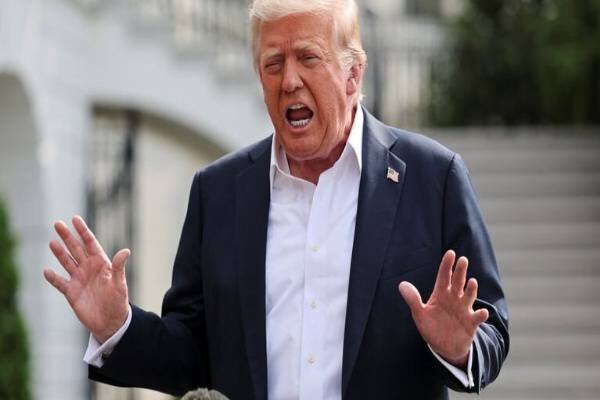Trump and Ending Eight Wars: Reality or Deception?

webangah News Agency,International desk: In politics,crafting a favorable narrative is an integral part of how leaders present themselves. Donald Trump, the controversial U.S. president, has dominated headlines during his second term wiht grandiose claims. In recent speeches and interviews, he asserted that he ended eight meaningful global wars or conflicts and saved millions through diplomacy and economic tools.
If true, these claims would merit scrutiny, praise-and even a Nobel Peace Prize. But do on-the-ground realities support Trump’s narrative? This article examines each claim in detail against objective data and autonomous reports.
Trump’s Narrative Framework
Trump has long sought to cement his image as a “peace president.” At the United Nations General Assembly in September 2025, he claimed to have ended “seven never-ending wars,” later increasing that count to eight after referencing the Gaza ceasefire-an assertion echoed during a meeting with Israeli Knesset members. He proudly cited “tariff pressure” and “firm mediation” while accusing the UN of ”inaction.” Though, fact-checks by credible sources such as Associated Press, CNN, and the Economist reveal many of trump’s claims are either exaggerated or lack ground-level evidence-and some conflicts cited did not exist at all for him to resolve.
A Case-by-Case Review of Trump’s Eight Claims
1. Thailand and Cambodia
A brief border clash between Thailand and Cambodia in July 2025 involved landmine explosions killing dozens. Trump threatened trade negotiations with both countries until they signed an unconditional ceasefire. While this move temporarily eased tensions, longstanding border disputes remain unresolved with violations resuming soon after. Experts view Trump’s role as effective but limited; hence claiming he “ended the war” is inaccurate.
2. Kosovo and Serbia
Trump claimed he resolved conflict between Kosovo and Serbia; however political analysts note no active war existed between them in 2025. His statement likely references a 2020 economic agreement from his first term which never fully materialized nor led to lasting peace-a clear example of promoting a resolution where no real conflict existed at that time.
3.Rwanda and Democratic Republic of Congo
The eastern DRC conflict involving Rwandan-backed rebels has plagued the region for decades. In June 2025 Trump hosted diplomats from both nations at the White House signing what was called the “Washington Peace” agreement-but key rebel representatives were excluded from talks; no battlefield changes followed; violence persisted alongside extensive human rights abuses reported locally-making any claim that war was ended largely theatrical.
4. India and Pakistan
A May 2025 flare-up in Kashmir after Indian tourist deaths led Trump to declare success forcing parties into ceasefire via heavy tariff threats-even though Pakistan confirmed this account India explicitly denied foreign intervention claiming military-to-military talks achieved it rather-with ongoing skirmishes suggesting Trump’s version serves more as promotional rhetoric than confirmed diplomatic breakthrough.
5. The Twelve-Day War
.
The short but intense June 2025 clash began when Israel bombed Iranian nuclear facilities directly involving U.S .forces.Trump boasted that deploying American bombers compelled Iran into ceasefire .Yet fundamentally , how does one claim credit for ending a war they helped provoke ?While hostilities paused temporarily,no monitoring agreements,nor mechanisms resolving crisis or lasting de-escalation emerged.Trump essentially declared ending hostilities that Washington participated in igniting .
6. Egypt and Ethiopia
Disputes over Ethiopia’s Renaissance Dam sparked serious diplomatic tension but no actual warfare occurred between Egypt & Ethiopia.Trump asserted having forestalled potential water-related warfare,but evidence shows no immediate threat warranting military action negotiation efforts stalled beforehand.Claming resolution mask exaggeration ,not substantiated facts
7. Armenia and Azerbaijan
In august 2025 following decades-long Nagorno-Karabakh friction ,Trump hosted Armenian PM & Azerbaijani President resulting normalizing relations accord.Despite progress seen analysts label this moment ‘the start toward peace’ rather than definitive end since core challenges like borders minority rights security assurances remain unsettled
8. israel and Hamas:.
The Gaza crisis intensified cruelly since October 2023.In October 2025 Trump’s proposed twenty-point plan established truce including prisoner swaps humanitarian aid partial Israeli withdrawal.Even though positive,it falls short without addressing deeper issues meaning durable peace remains elusive.Moreover sporadic attacks alongside Israeli threats post-ceasefire continued.Underlining America’s role within ongoing hostilities rather than solely peacemaking
Conclusion:
Donald Trump’s claim of ending eight wars contrasts sharply with field realities independent reportage.The claimant stations several conflicts never actually erupted (Egypt-Ethiopia Kosovo-Serbia) while others feature fragile truces lacking final agreements or root cause solutions.Trump seeks through magnifying foreign policy peacemaking feats present himself successful peace advocate though these declarations serve mostly propagandistic aims.A broad assertion wrapping eight wartime closures within eight months not only exaggerates but misleads public perception .


